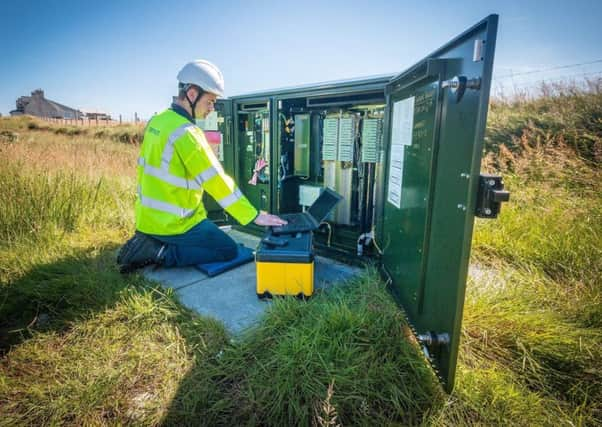Libby Bateman: Why broadband for all must include rural areas


The real ‘light bulb’ moment came as I sat in my friend’s kitchen and watched a freight train chugging up a remote valley in the Yorkshire Dales. At that point it was quite obvious that if our forefathers could build infrastructure capable of carrying trains across the countryside, then I was pretty sure we could manage a fibre optic cable across the same landscape.
The modern argument is that it is not economically viable because it costs too much to deliver against projected revenue. However, looking back to the example of the train, the argument falls flat as those who invested in the rail infrastructure would never have seen payback in their lifetime. The infrastructure became an enabler for economic development and growth, the same as fibre broadband does.
Advertisement
Hide AdAdvertisement
Hide AdTen years later and the local authority broadband projects are making headway with delivering a Government-funded broadband infrastructure upgrade project, predominantly based on fibre to the cabinet technology. This works for towns and villages where most of the properties are within 1.2km of the telephone cabinet.
Sadly this does not help outlying or remote properties as the signal degrades very quickly once it leaves the cabinet and travels the rest of the way to the property on the old copper wires. However, there are other options to get a better broadband service and I’m pleased to be working with the CLA helping our members to find and deliver these solutions.
There are a number of possibilities to bring a fibre service to homes and businesses by working directly with suppliers. This will bring a real boost to businesses of all types and increase the sustainability of rural areas.
Advertisement
Hide AdAdvertisement
Hide AdGone are the days when tourism businesses sold their holidays on escaping from the rat-race; connectivity has become a core demand from residents, businesses and visitors. Equally it is becoming more challenging to sell or rent property which does not have good connectivity.
Communities can work together to aggregate a demand for service. This demand forms the basis of a business case to deliver the infrastructure. The project is then costed and there may be options to reduce costs through self-digging some parts of the network. Invariably there will be a gap between the cost of building the fibre network and the potential return on the investment; this gap needs to be filled either by grant-aid and/or community contributions.
The CLA successfully lobbied the Government for a new property-level grant to help cover the funding gap, the Gigabit Voucher Scheme was launched earlier this year. This enables businesses to claim £3,000 (£500 for residential) towards the cost of installing a gigabit capable service. CLA will continue to press for additional money so that rural communities can access fast and reliable broadband, enabling them to compete and flourish in a global market place.
Advertisement
Hide AdAdvertisement
Hide AdThe CLA has also campaigned hard for a Universal Service Obligation for broadband which comes into force later this year, bringing a legal right to request a 10mbps broadband service to homes and businesses.
Unfortunately there may be excess construction costs in implementing this request which will, in some circumstances, need to be met by the property owner. Some people argue that 10mbps isn’t fast enough, however 10mbps is the current average usage speed. I’m pleased to say that there is an expectation that this will be reviewed at regular intervals so it can stay in line with average demand.
Bringing fibre directly to rural homes and businesses remains the gold-plated solution, but we must not become fixated on it as being the only solution as there are many alternative network providers who can get to rural areas quickly and efficiently.
This may be via a point-to-point microwave link, 4G mobile or via satellite. Each alternative solution has its pros and cons, and it is important to understand the benefits and limitations of each before committing to installing a solution. Households and businesses have very different demands on connection capabilities and it is important to understand usage demand before seeking the best solution.
Advertisement
Hide AdAdvertisement
Hide AdCLA remains determined to push Government and Ofcom for minimum coverage obligations of 4G and, in time, 5G across rural areas. It is vital that we can send and receive data on the move, especially if we are to fulfil our aspiration to embrace innovation and technology to allow us to be more efficient and productive.
Data on the go has become an expectation instead of a novelty, and we are demanding that it is universally delivered through our #4GForAll campaign.
Libby Bateman is the rural advisor to the CLA – the Country Land and Business Association.